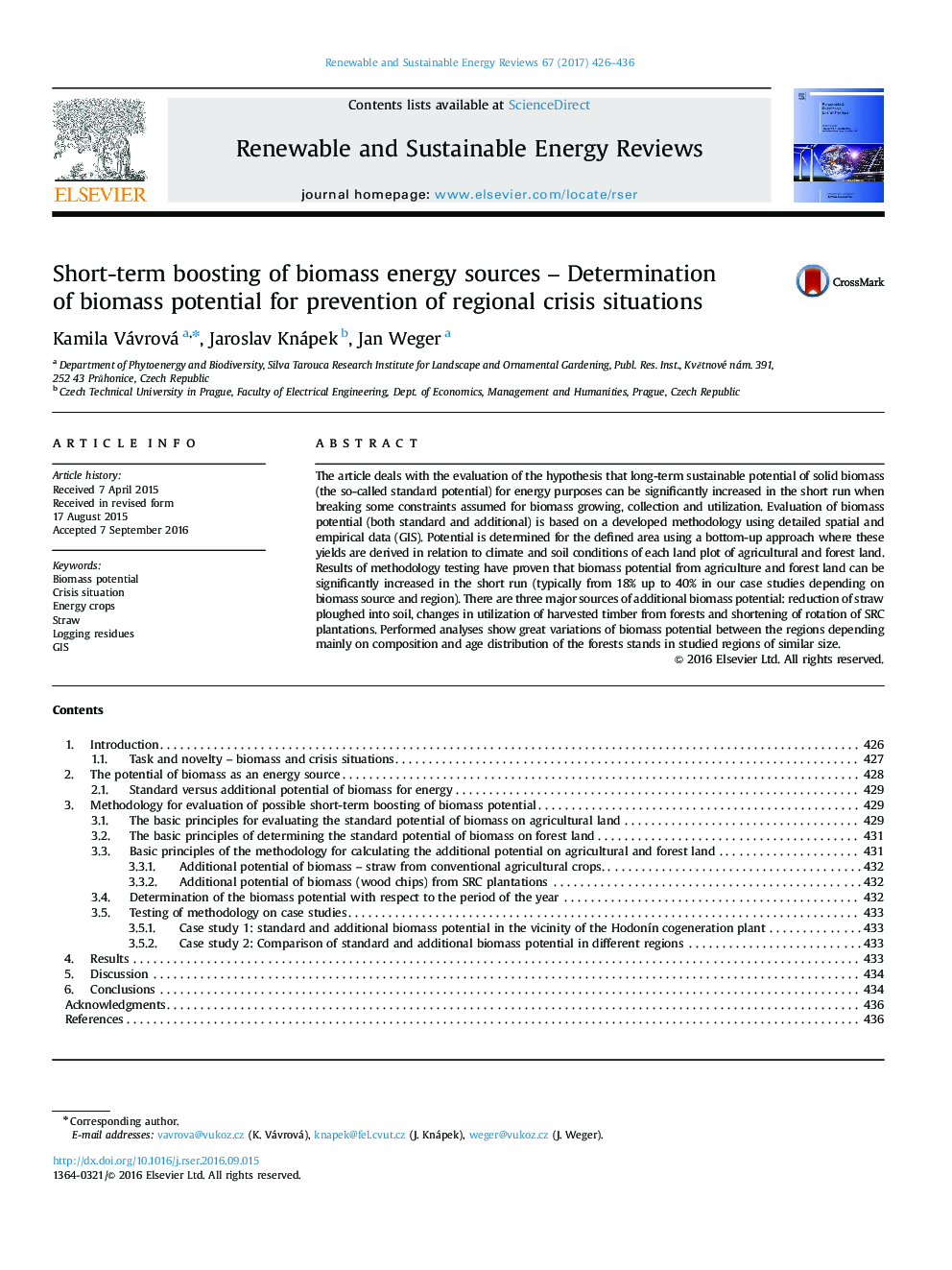| Article ID | Journal | Published Year | Pages | File Type |
|---|---|---|---|---|
| 5482746 | Renewable and Sustainable Energy Reviews | 2017 | 11 Pages |
Abstract
The article deals with the evaluation of the hypothesis that long-term sustainable potential of solid biomass (the so-called standard potential) for energy purposes can be significantly increased in the short run when breaking some constraints assumed for biomass growing, collection and utilization. Evaluation of biomass potential (both standard and additional) is based on a developed methodology using detailed spatial and empirical data (GIS). Potential is determined for the defined area using a bottom-up approach where these yields are derived in relation to climate and soil conditions of each land plot of agricultural and forest land. Results of methodology testing have proven that biomass potential from agriculture and forest land can be significantly increased in the short run (typically from 18% up to 40% in our case studies depending on biomass source and region). There are three major sources of additional biomass potential: reduction of straw ploughed into soil, changes in utilization of harvested timber from forests and shortening of rotation of SRC plantations. Performed analyses show great variations of biomass potential between the regions depending mainly on composition and age distribution of the forests stands in studied regions of similar size.
Related Topics
Physical Sciences and Engineering
Energy
Renewable Energy, Sustainability and the Environment
Authors
Kamila Vávrová, Jaroslav Knápek, Jan Weger,
